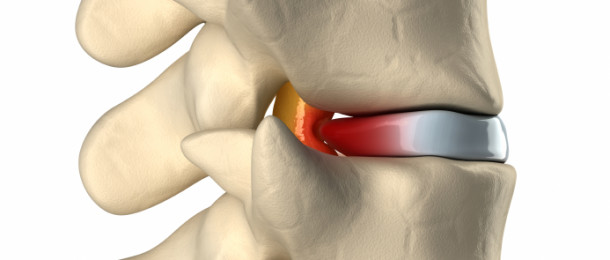Chronic Pain Sufferers Overuse OTC Medication Survey Results
In a recent AGA-commissioned poll of adults over 30 found that 43% of chronic pain sufferers have knowingly taken more than the recommended dosage of over-the-counter pain medicine. An overdose of these medicines can cause stomach bleeding, ulcers, and liver damage.
Another finding from the survey was that 38% of those polled were unaware that combining multiple NSAIDs or multiple acetaminophen products increases the risk of serious health complications.
Click here to read the full article by Robert Preidt.
What Is A Herniated Disc?

A herniated disc is also known as a slipped disc or ruptured disc. A disc is similar to a jelly-filled doughnut. It has a tough exterior and a softer center. A herniated disc occurs when some of the inner jelly pushes through the exterior, and herniated discs typically occur in the lower back. However, it can also develop inside of the neck.
What Are Some Of The Symptoms Of A Herniated Disc?
In some cases, people with a herniated disc do not have any symptoms. However, if one does have symptoms, then he or she is likely to experience arm pain, weakness, numbness, pain and tingling in the arms or legs. Muscle weakness is another possible symptom of a herniated disc.
Risk Factors
Anyone can develop a herniated disc. However, there are some people who are at a greater risk for it than others. Obesity can increase one’s risk of developing a herniated disc. The excess weight can put extra pressure on the discs. People who have a physically-demanding job are also more likely to develop a herniated disc. Repetitive pulling, lifting and twisting puts pressure on the discs.
Furthermore, genetics can play a role in the development of a herniated disc. People who have a close relative with a herniated disc are more likely to develop it themselves.
Treatment
It is estimated that 90 percent of patients with a herniated disc are able to get relief with conservative treatments. This includes things such as exercising, avoiding painful positions and pain medications. Muscle relaxers and injections can also be used to treat a herniated disc.
Spinal manipulation is another treatment option. This involves adjusting the back. Additionally, a massage can be used to alleviate a herniated disc.
In rare cases, surgery is recommended for a herniated disc. Physicians are likely to recommend surgery if the patient’s condition does not improve within six weeks. Surgery may also be recommended if the patient has trouble standing or walking.
If you are reading this on any other blog than Comprehensive Pain Management Center or via my RSS Feed, it is stolen content without credit. You can find us on Twitter via @CompPainMgmt. Come and visit our blog at http://www.compainmc.com/blog/.

